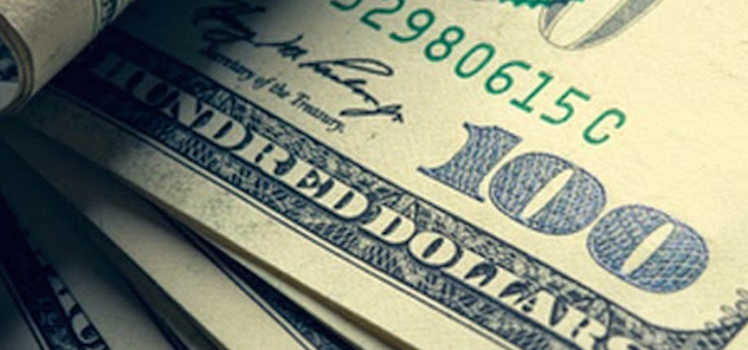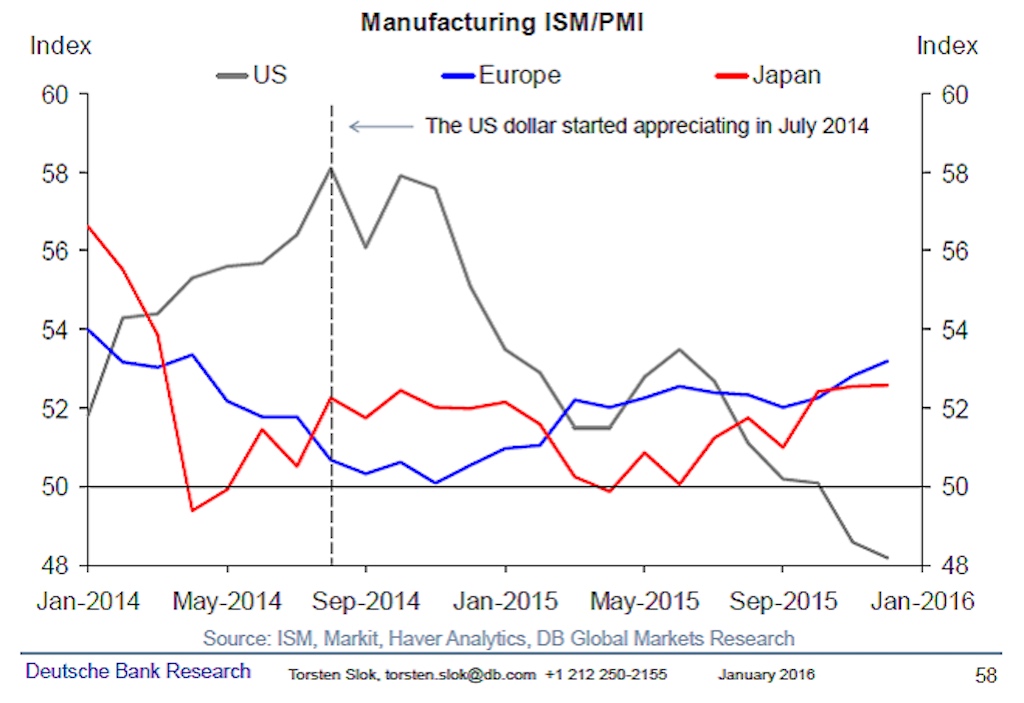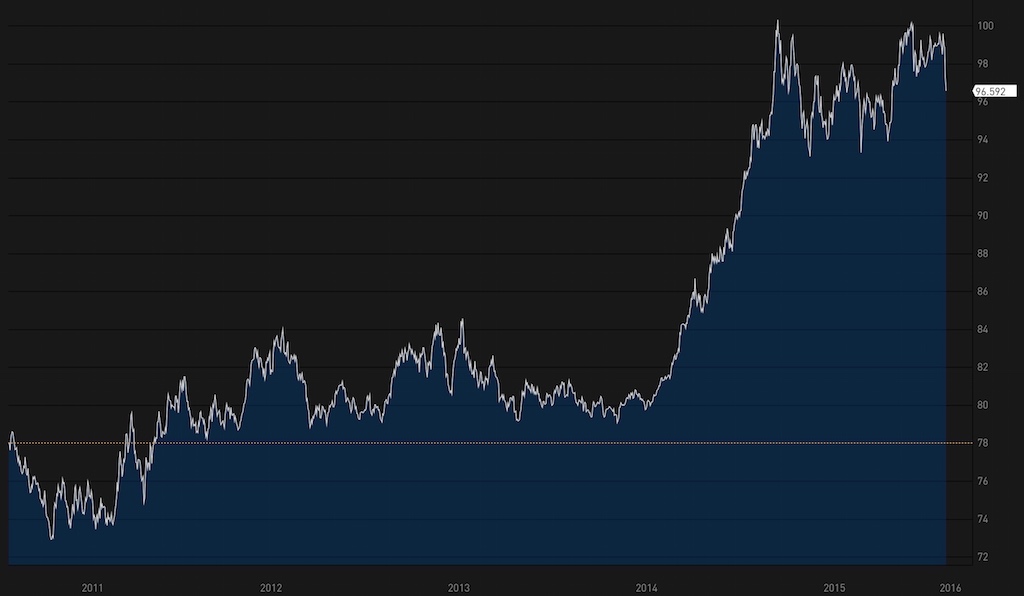Blame the Dollar, Not China

The U.S stock markets have been oscillating between mayhem and malaise in 2016. In early days the volatility was blamed on China and its erratic stock markets. Volatility remains elevated, but malaise has set in as data last week confirmed fears of a slowdown in the U.S. economy. In the final quarter of 2015, the economy decelerated to a mere 0.7% annual growth rate, a significant drop from the pace witnessed earlier in the year. The data revealed that exports slowed and that firms reduced orders to build inventories. With exports falling, it’s easy to blame the problem on foreigners; everyone knows that China and Europe’s economies are not doing so hot. However, looking a bit deeper, it appears more likely that the problem lies in the strengthening US dollar; America’s successful emergence from the Great Recession is to blame.
A recent chart shown by Torsten Slok at Deutsche Bank shows the situation clearly. U.S. manufacturing as measured by the ISM Purchasing Manager’s Index has been slowly slipping since the latter half of 2014. In fact, the index fell below the critical level of 50 in November 2015, which signifies an overall contraction in this sector. Meanwhile, while the manufacturing indices of both Europe and Japan have wobbled, they have remained steadily the expansion phase. Whatever the cause for the US slippage, it is not hitting Europe and Japan.
Mr. Slok suggests that the rise of the US dollar could be the cause. The rise in the value of the dollar against other securities makes US produced goods appear relatively expensive. In other words, if you are a consumer in Germany or Japan who wants to buy an iPhone or travel to Florida for a Disney vacation, a strengthening dollar against the euro or yen will make that purchase much more expensive. As the chart above shows, when the dollar began its broad-based strengthening in July 2014, the expansion in US manufacturing stopped. If it was the case that a slowing Chinese demand was responsible for this fall-off in manufacturing, we would be able to observe a similar pattern in the Japanese and European data, as these regions export significantly to China as well. Instead, the plausible reason is that US goods got relatively too expensive, and demand for them fell.
Why is the dollar so strong? As a basic premise, the dollar strengthens when a lot of people buy it, through the purchase of American goods or investments. The US economy has shown the best recovery from the Great Recession, and as a result, investors from around the world have flocked to US assets – especially equities – as American firms bounced back and the stock market performed well. However, the real catalyst for dollar strength emerged when the Federal Reserve became the first major central bank to exit from excessively loose monetary policy. With interest rates projected to rise in the U.S. and stay low or even fall elsewhere, higher yields domestically will attract capital at other countries’ expense.
For example, Japan’s central banks dropped interest rates into negative territory last week. Even at a meager 1.84%, the U.S. ten-year government bond yield is a bargain relative to the 0.032% a Japanese ten year bond offers! Increasing one’s yield by a factor of 60 is a strong incentive to buy the dollar and U.S. bonds.
Dollar Index (DXY) – higher is stronger
Source: Bloomberg
The dollar has appreciated so strongly that it has created effects similar to larger interest rate hikes. The Fed is likely to postpone its next hike to June, as the first hike has had a bigger slowdown effect on the economy than anticipated. As such, the economic success at home, not China, is to blame for the current blip in the economy.







